Design
Wire Framing and Initial Application Architecture
During the initial project scope work that the business analyst leads, I will have discussions with development to determine where the application
will be placed in our enterprise tools environment. In several of my current projects our applications replace part or all of legacy technology,
but must be launched by that technology to keep the flow of our employees' work intact.
Each discipline usually has a concept for the flow and work within the application. I will take all of this input and make sure I discuss any
technology expectations and limitations with development to create initial wire frames for the project. This acts as a starting place
for discussions about business and development expectations before I start any work on mockups.
Design Work to Prototyping
Once a project moves from the scoping stage to initial iterations, I move from wire frames to designing in more detail. I will e-mail questions
about process or to review small design elements to business representatives and employees. While business will have a proposed process within the
application, I want the design to support both what business wants and how our employees will really use
My business analyst and I usually work hand in hand. As
he or she gathers requirements, I will take those and create design. We review this together with the business representatives and refine both
the business requirements and the design. Development is always with us at the table and we often have discussions about direction both technically
and UI design-wise. It's also important to me to understand my technical boundaries especially when creating new interaction patterns.
Informed Design
I make sure that the designs I'm creating are based on informed design. Informed design is based on sound psychological and
physiological principles reflected in standard industry and corporate UI patterns, employees' technical and digital
experiences and expectations and well-thought out business process. I spend time researching new interaction designs, both the supporting
psychology, determining the most commonly used industry pattern and determining any modifications that need to be made to them.
While my design work may start out as physical paper and pencil sketches, it all goes into a mockup/prototype. The amount of interaction is
dependent on how soon the work is needed and how much interaction is needed to inform the development and test teams. My prototype is used as
the UI specification, although I will usually add additional notes with the business requirements.
Development Phase
During the development phase, I work with development and QA to make sure the design is implemented as close as possible. I work out any issues that come
up either technical or business requirements-wise. Because I have a development background I will often help out with any HTML or style issues. I've
even researched how-tos for middle tier development for junior developers. At different milestones I will do a testing pass through the application to
identify UI bugs.
